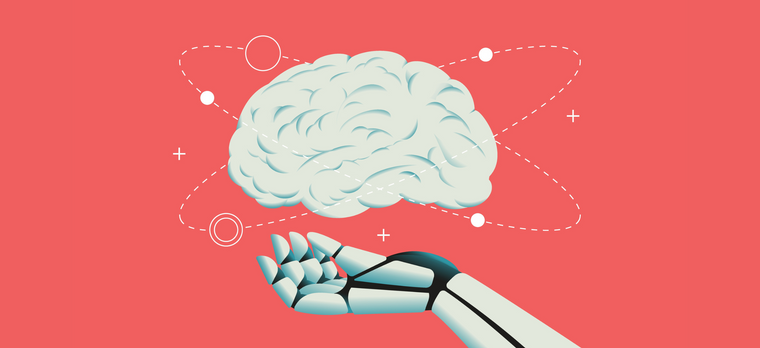Survival of the insights function: a LATAM case study
The insights function has shifted, with nearly half of research projects now conducted internally. In Latin America, businesses grapple with effectively leveraging AI for insights generation, underscoring the growing importance of partnerships.

The insights function has evolved over time, becoming more accessible and increasingly in-house for many businesses. With modern technology and specialised companies providing support, close to half of all research projects today are conducted internally. One challenge that businesses in Latin America (a.k.a. LATAM) face is the efficient use of Artificial Intelligence (AI) in insights generation. The transformation of the insights function highlights the need for a more collaborative, partner-to-partner relationship between internal insights teams and external insights providers. In this article, we will explore this shift, focusing on Coca-Cola LATAM's approach to data internalisation and its implications for the market research industry.
Pressing Forces:
Like for the rest of the industry, the quest for efficiency impacted Coca-Cola as it did any other multinational company. And we divided the quest into two pressing forces or issues that jeopardise our role within the corporate structure.
The first issue, which has been the subject of much discussion within our industry for several years, revolves around the continuous reduction in budgets and the ongoing distancing of our position from the executive level (which, incidentally, is increasingly being filled by data science-oriented roles).
The second phenomenon is an inclination that appears to be gaining traction in some major corporations, despite its effectiveness not having been conclusively proven: the aspiration to develop worldwide expertise implemented at the local level (referred to as "Glocal"). In essence, this implies that for researchers like us, centralised Business Intelligence units are taking on our function as purveyors of crucial business insights and statistics.
Data Internalisation and the Emergence of the Insights Industry
The dynamic between internal insights teams and external insights providers has shifted considerably in recent years. Companies now have a clear understanding of the extent to which they can internalise their research functions while recognising the value of specialised market research agencies. For the insights function to evolve from a descriptive to a predictive role, organisations need to embrace new technologies and bring experts on board to understand and advise on emerging trends.
The Coca-Cola LATAM Human Insights Initiative
The vast amount of data generated by Coca-Cola LATAM presents both opportunities and challenges. The organisation aims to achieve a "Zero Waste – Data" status where all information related to business problems is readily available and incorporated into decision-making processes. There are three key issues that need addressing:
Access to Information: Developing a centralised repository for easy access to information across teams and departments that can connect with the network (our global business)
Managing Existing Information: By integrating an AI-based system to filter and analyse the vast amounts of accumulated data, saving time and resources
Presenting Information: Maximising the efficiency of data extraction by summarising and presenting data in an engaging and easily digestible format that can be used as a source to create insights and that will enable us to be more “efficient”
Addressing these challenges requires not only technology solutions but also a cultural shift within the Human Insights team and the organisation as a whole.
The Role of Traditional Market Research Professionals and the Use of Technology in Coca-Cola
The evolution of the insights function in Coca-Cola emphasises the need for conventional market research professionals to adapt to new technological tools and methodologies. AI and Machine Learning (ML) can help automate and streamline data analysis while continuing to rely on human insight to interpret and contextualise findings.
However, the role of technology should not supplant the importance of the human touch in transforming data into actionable insights. Maintaining a balance between leveraging advanced technology and human expertise is crucial in nurturing an organisation's information base. By finding this equilibrium, organisations can optimise the use of resources and extract maximum value from their investment in market research.
Beyond that, there’s also a culture of self-service that needs to be fostered among research users. It may involve a major intervention since it requires change in management routines and to be sensitive to managers who do not have a lot of time to figure things out.
In terms of the tools, some technical issues need to be solved to maximise availability and required trust. This may include the establishment of guidelines about when to use the information and when to avoid it (e.g., is the sample big enough? Is this a qualitative finding?) or the need to be able to transfer the information contained in images to text or to create a standardisation of metadata that eventually can “teach” the language processor how to better leverage the information.
Conclusion
The growing trend of data internalisation has changed the market research landscape, emphasising the need for a more collaborative relationship between internal insights teams and external insights providers. By addressing the challenges in accessing, managing, and presenting data, organisations like Coca-Cola LATAM can successfully adopt an insights-driven approach to their growth strategy. As the role of traditional market researchers evolves, leveraging AI and ML technologies while retaining the importance of human insight will be key to maintaining their relevance and transforming the insights function into a genuinely strategic asset for businesses in the fast-paced global market.


